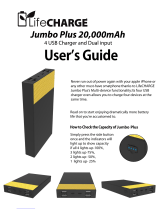
Table of Contents
Unpacking Information ........................................................................ 4
Introduction ......................................................................................... 4
General Description ............................................................................. 4
Key Features ....................................................................................... 5
The Front Panel ................................................................................... 5
LEDs Definition ................................................................................ 5
The Rear Panel .................................................................................... 7
Installation........................................................................................... 8
Desktop Installation ............................................................................. 8
Rack-mount Installation ....................................................................... 8
Installing Network Cables ..................................................................... 9
Functional Description ........................................................................ 10
Jumbo Frame ..................................................................................... 10
Flow Control and Back Pressure ............................................................ 10
Mirror ................................................................................................ 10
VLAN................................................................................................. 10
Trunk (Aggregation) ........................................................................... 10
Quality of Service (QoS) ...................................................................... 10
Management guide ............................................................................. 11
Access the Switch ............................................................................... 11
System ............................................................................................. 12
Port .................................................................................................. 15
VLAN................................................................................................. 16
PVID ................................................................................................. 17
Aggregation ....................................................................................... 18
LACP ................................................................................................. 18






















